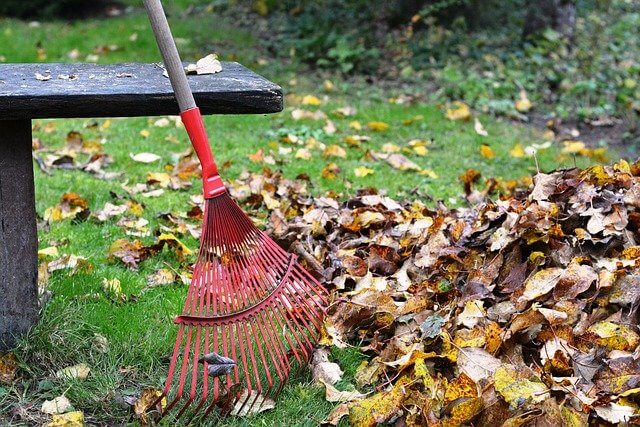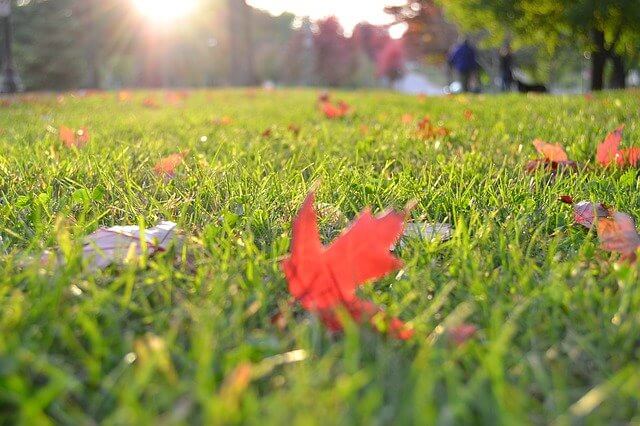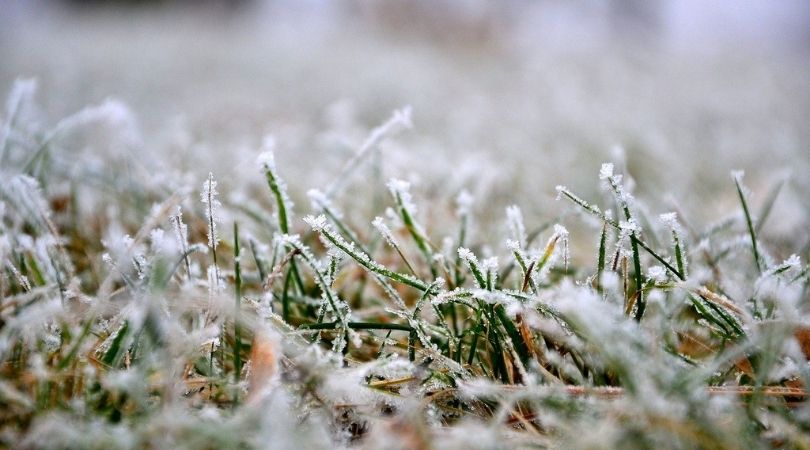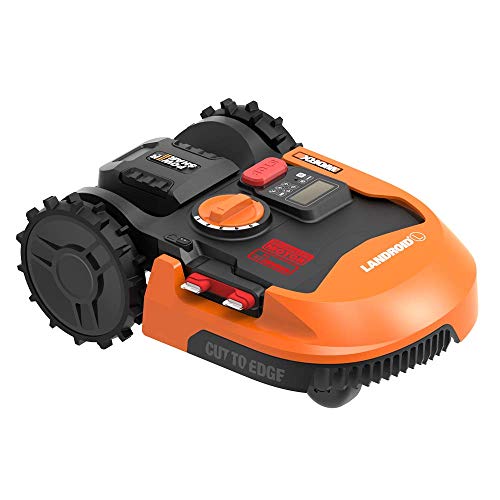As the summer winds down and the cool months of autumn start to set in, you might start thinking about preparing your lawn for the upcoming winter months.
After the summer, your lawn may be looking a little rough as the result of the heat, bugs, and weeds that are commonplace during the warmer times of the year, and properly preparing your lawn for the colder parts of the year will not only ensure that your lawn survives, but comes back in the spring greener and healthier than ever.
Today I’d like to offer you some tips to help you get your lawn ready for winter, and I’ll also be recommending some tools and gadgets you can use to make preparing your lawn as easy as possible.
Table of Contents
Tips For Preparing Your Lawn For Winter
Let’s get right into some tips to help you correctly prepare your lawn for winter. Getting your lawn ready for the winter isn’t an inherently difficult task, but there is a fair amount you have to remember. Let’s start with the basics.
Remove Fallen Leaves

If you live in a more northerly area, then you’re familiar with your lawn being covered in leaves when the trees begin shedding them. You may be tempted to simply leave all of the fallen leaves on your lawn throughout the winter, but this is generally inadvisable as letting leaves lie on top of your grass all winter can kill your lawn by smothering it.
If you don’t want to just throw your leaves out, however, you can add them to your compost pile (if you have one). Dry leaves will insulate your compost and prevent it from becoming too wet.
You can also recycle your dry, fallen leaves by grinding them up with a mulching mower and then leaving them to decompose on your lawn, which won’t negatively affect it.
Aerate Your Lawn
If you have a lawn made of cool-season grasses, then you’ll probably want to aerate your lawn in the autumn. Aeration involves breaking up layers of compacted soil, making it easier for the grassroots under the soil to absorb air, water, and other nutrients they need to survive.
There are a few types of aeration, although the best type is core aeration, which involves using a tool to dig up hundreds of small cylindrical plugs of soil from your lawn.
Dethatch Your Lawn
Thatch is a layer of mostly-dead grass that builds up on your lawn above the soil but below the green part of your grass. If your lawn has too much thatch, it will elevate the growing point of your grass above the soil. Grass needs to be under a sufficient layer of soil in the winter so that it’s insulated properly; otherwise, your grass will be far more susceptible to frost damage.
You can use core aeration to break up the layer of thatch under your grass, or you can use a dethatcher, which is a machine that is able to cut into the thatch below the grass and pull it up and out of your lawn.
Use Fertilizer
Damaged turf can be repaired over the winter if you fertilize your lawn at the right time. For cold-season grasses, you should ideally fertilize your lawn twice before winter arrives; once in the early fall (mid-August to mid-September) and once in the late fall (mid-to late-October).
It’s important that you do your best to find the right time for fertilizing your lawn. Fertilizing it too early will cause your grass to grow too much before winter starts, which actually makes it more susceptible to damage, whereas fertilizing it too late will simply have no effect at all.
Ideally, you should use a fertilizer containing nitrogen and potash, and you should distribute your fertilizer, so your lawn gets about 1 pound of nitrogen for every 1,000 square feet.
Properly fertilizing your lawn in the autumn has numerous benefits:
- It increases the chlorophyll content of your grass, making it more vibrantly green
- It makes your grass less susceptible to freezing during the winter
- It helps your grass develop stronger, healthier roots
- it helps your grass sprout sooner in the spring
Trim Your Lawn

Making sure that your lawn is the right height before the snow hits will help it survive through the winter. In the autumn months, you should cut your grass to a slightly longer length than you normally would.
The length of your roots is proportional to the length that you permit your grass to grow; the longer your leaves are, the longer your roots will be too. Longer roots help your grass take in more nutrients and also make your grass more resistant to environmental stresses. Longer leaves also help insulate your lawn during the winter.
However, if you let your grass get too long before winter sets in, it can get matted, which leaves it susceptible to various diseases.
Tools For Preparing Your Lawn For Winter
Next, I’d like to suggest a few tools you can use to help you prepare your lawn for winter. These tools will make it far easier for you to complete all the tasks you need to ensure that your lawn is ready for snow.
1. Ergonomic Leaf Rake
The rake is a tried-and-true method for removing leaves and other debris from lawns. While it doesn’t work as quickly as a leaf blower, the upside is that a rake is way quieter.
What’s cool about this rake is that it features a handle with a D-grip, giving you extra control over your movements. It also features 24 durable steel teeth so you can rake up pretty much anything that might be lying on your lawn.
2. Core Aerator Tool
If you need a tool for core aeration, you should definitely consider something like this. This aerator is incredibly simple to use and makes it easy to aerate areas of your lawn relatively quickly.
Consisting of two hollow tines attached to a shovel-like handle, this aerator tool is made of durable steel and features a 37” handle designed to let you work for a long time without hunching over too much and hurting your back. This tool is also available as a spike aerator.
3. Electric Dethatcher
An electric dethatcher can make the process of removing thatch from your lawn incredibly easy. This electric dethatcher is similar to a powered push mower, but instead of mower blades, it has a rotating barrel covered in stainless steel tines.
These tines dig into your lawn, grab onto the layer of thatch, and pull it right out. This dethatcher plugs into a wall socket and comes with a 150′ power cord to help you cover the entirety of your lawn.
4. Fertilizer
As we’ve mentioned, it’s good to use a fertilizer that contains plenty of nitrogen, as this will help your lawn survive through the winter. A nitrogen-based fertilizer will ensure that your lawn develops strong roots and looks bright and healthy in the spring.
5. Spreader
A spreader can help you distribute your fertilizer as evenly as possible over your lawn. This spreader resembles a wheelbarrow with an opening at the bottom to distribute your fertilizer mixture; a rotating blade scatters the mixture evenly on the ground.
6. Robotic Lawn Mower
If you have a lawn that frequently needs to be trimmed, but you don’t feel like doing it yourself, then why not invest in a robotic lawnmower? True, they’re pretty expensive, but you also get a lot for your money.
This particular mower can cut up to half an acre of grass on a single charge. It can navigate your lawn almost entirely on its own, and it can even detect when it’s raining out so it can return to a sheltered area and wait out the storm.
If you’re looking for a cool gadget that can save you time on your lawn care, then a robot lawnmower is definitely worth considering.
Conclusion
Preparing your lawn for winter is incredibly important since it ensures the continued growth of your lawn when winter ends. Not preparing your lawn will lead to grass that looks patchy, brown, and unattractive.
There are lots of things you can do and tools you can use to help get your lawn ready for the winter. I hope that after reading what I have to share with you that you’re now fully prepared to start prepping your lawn for the first snowfall of the year!







